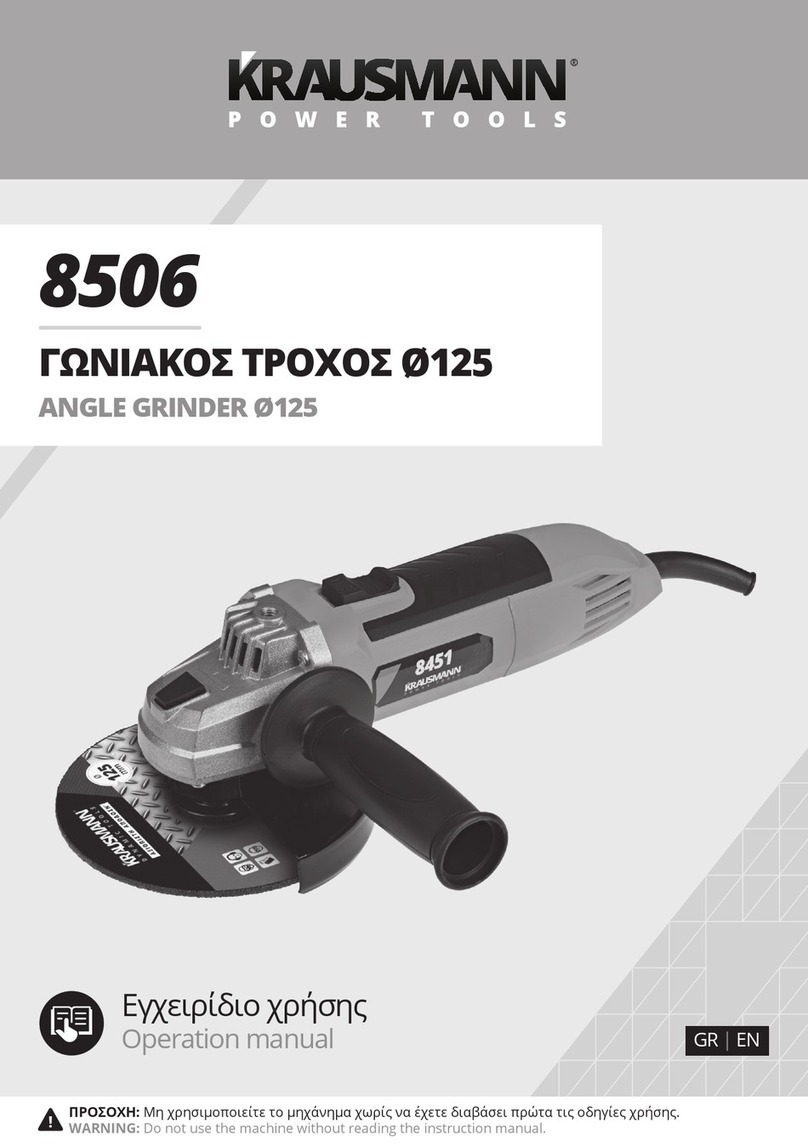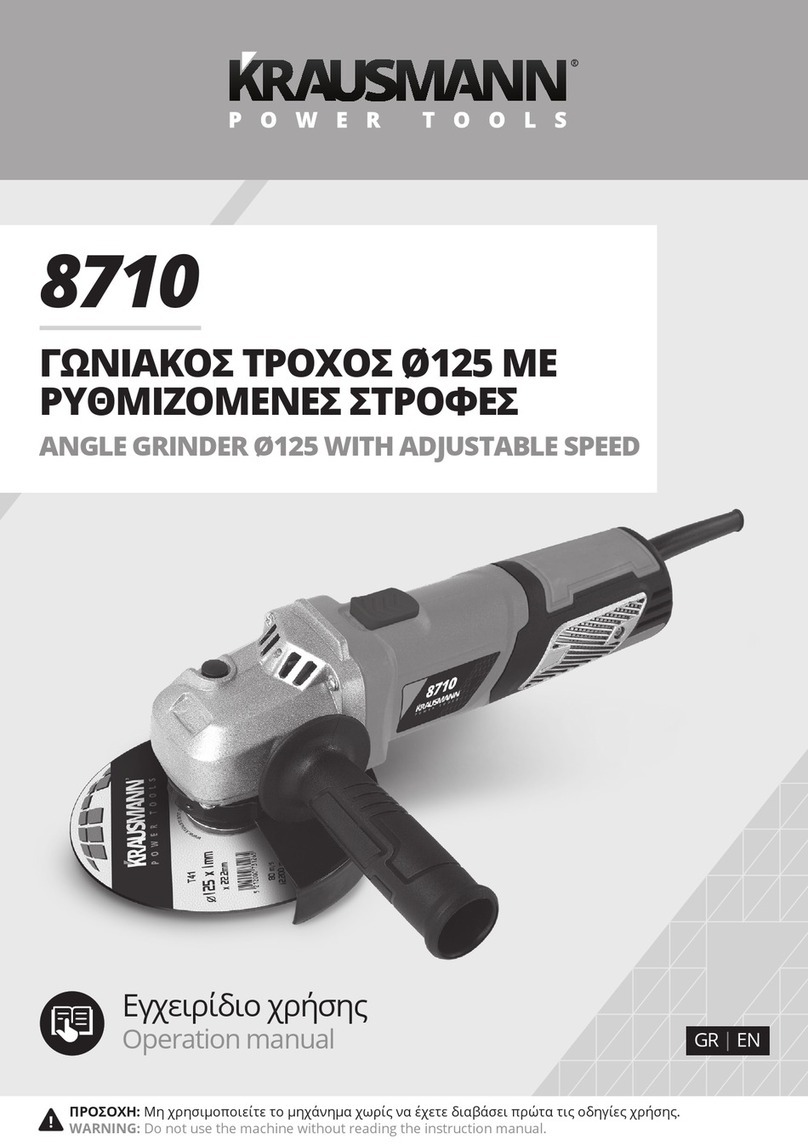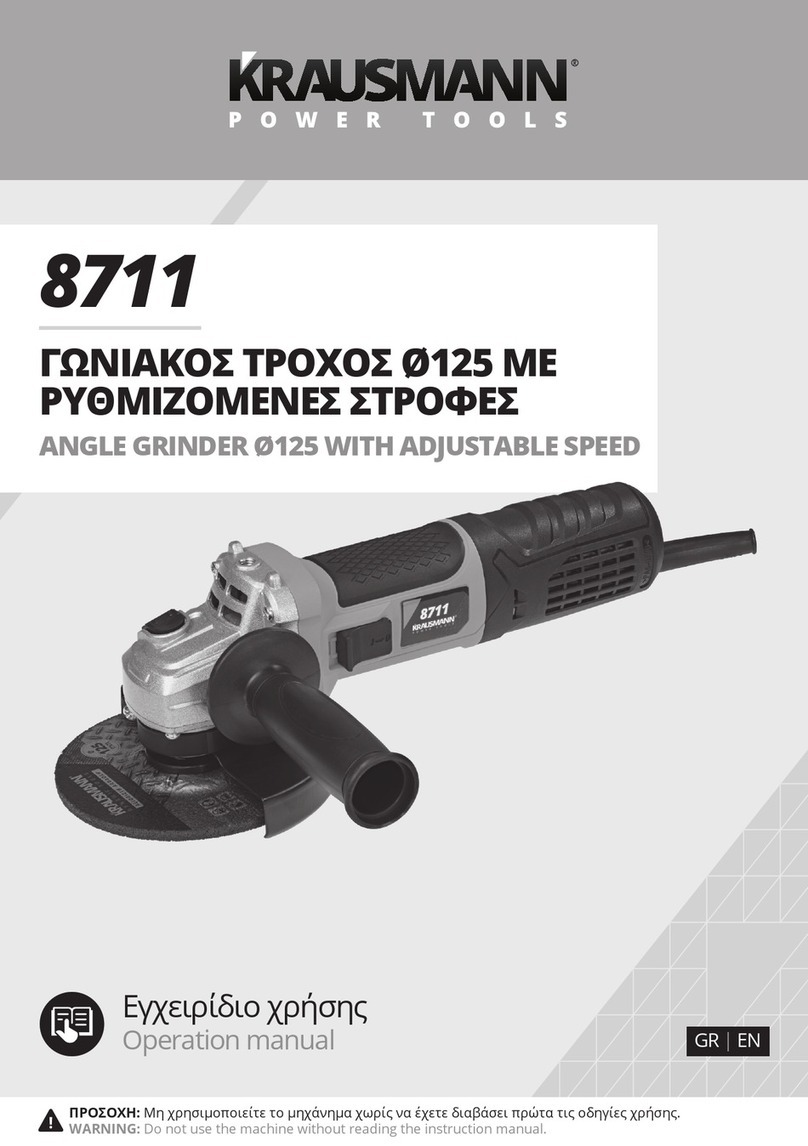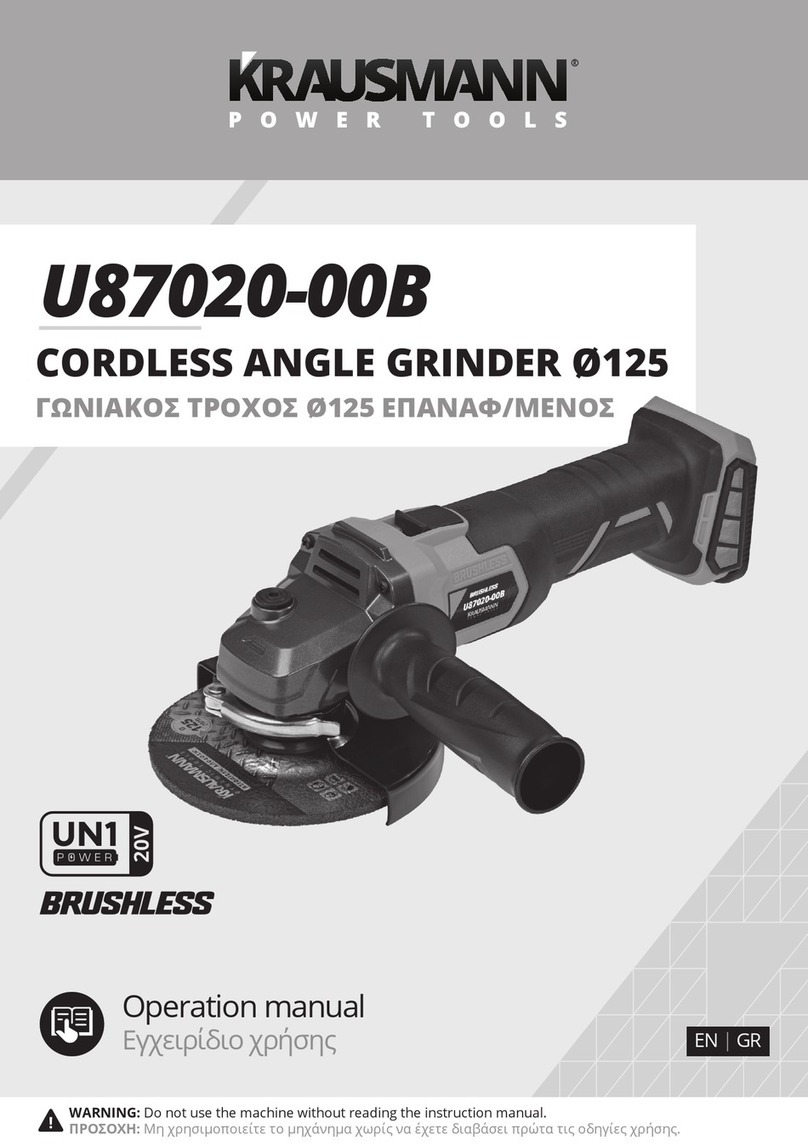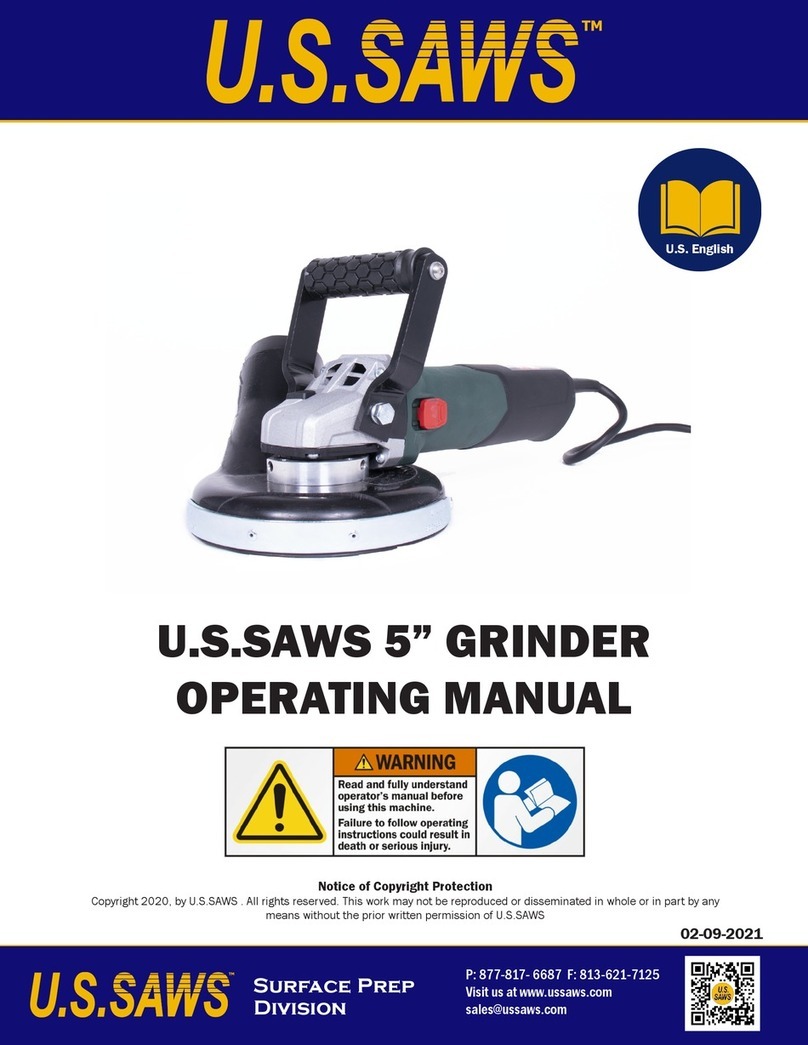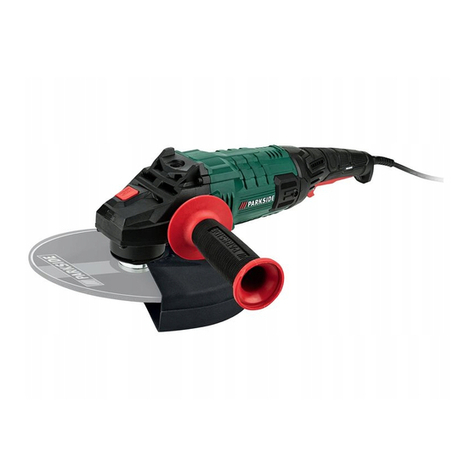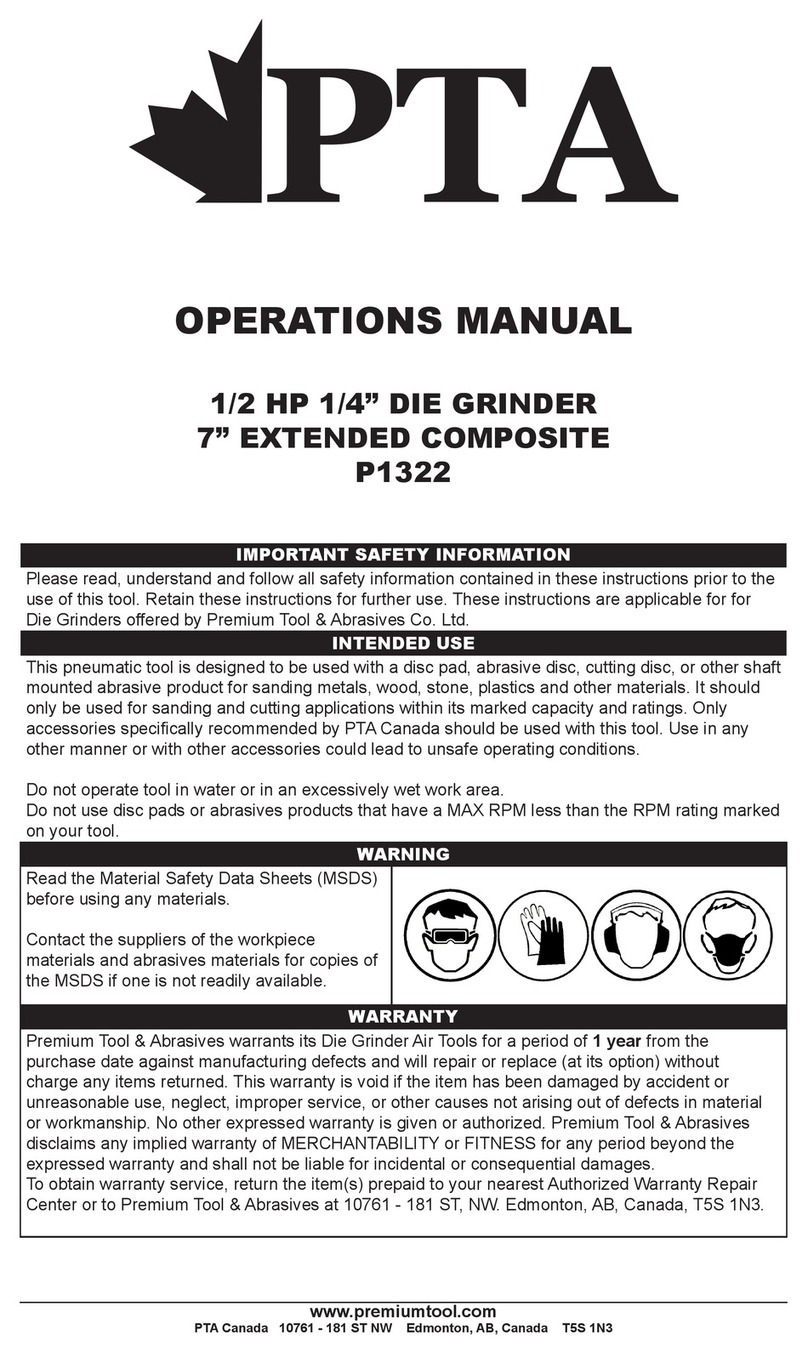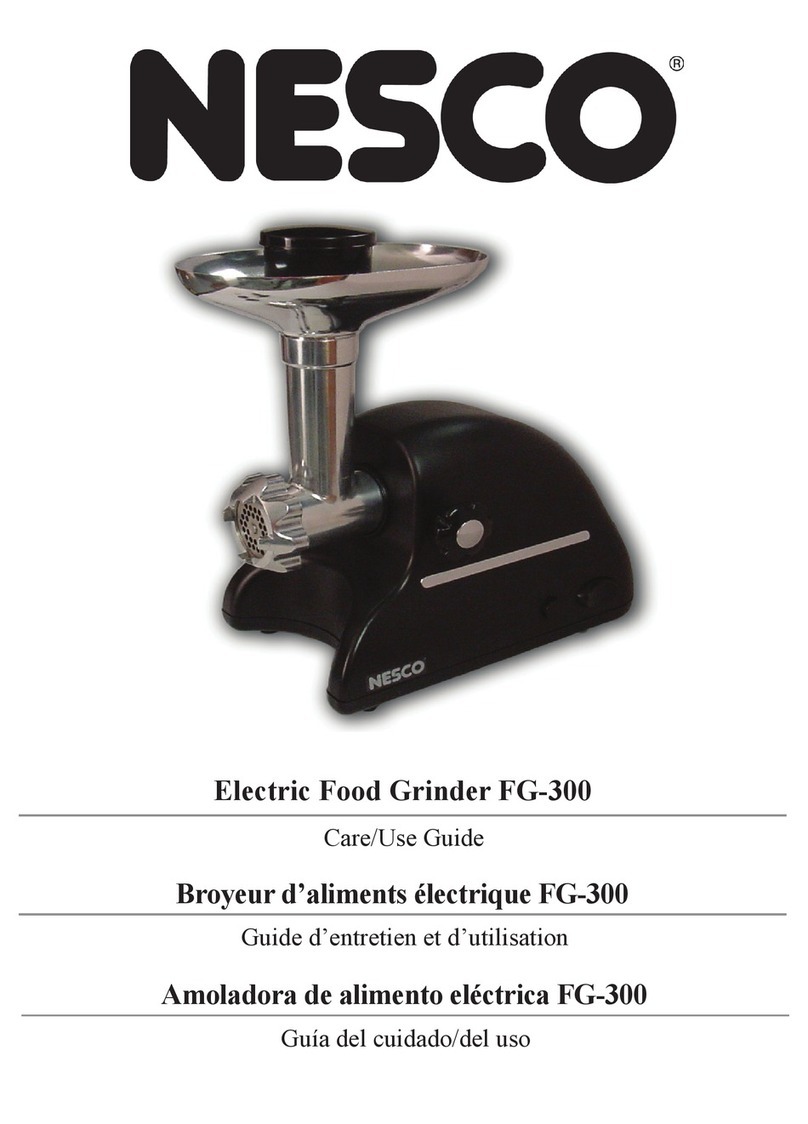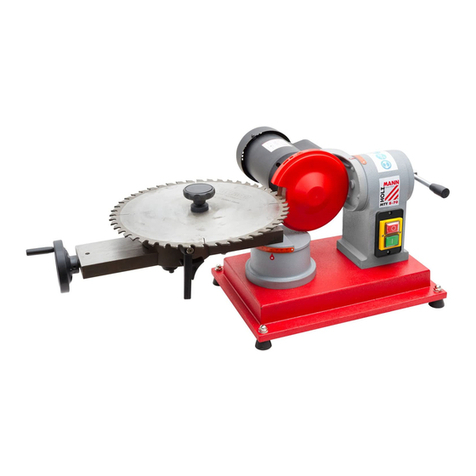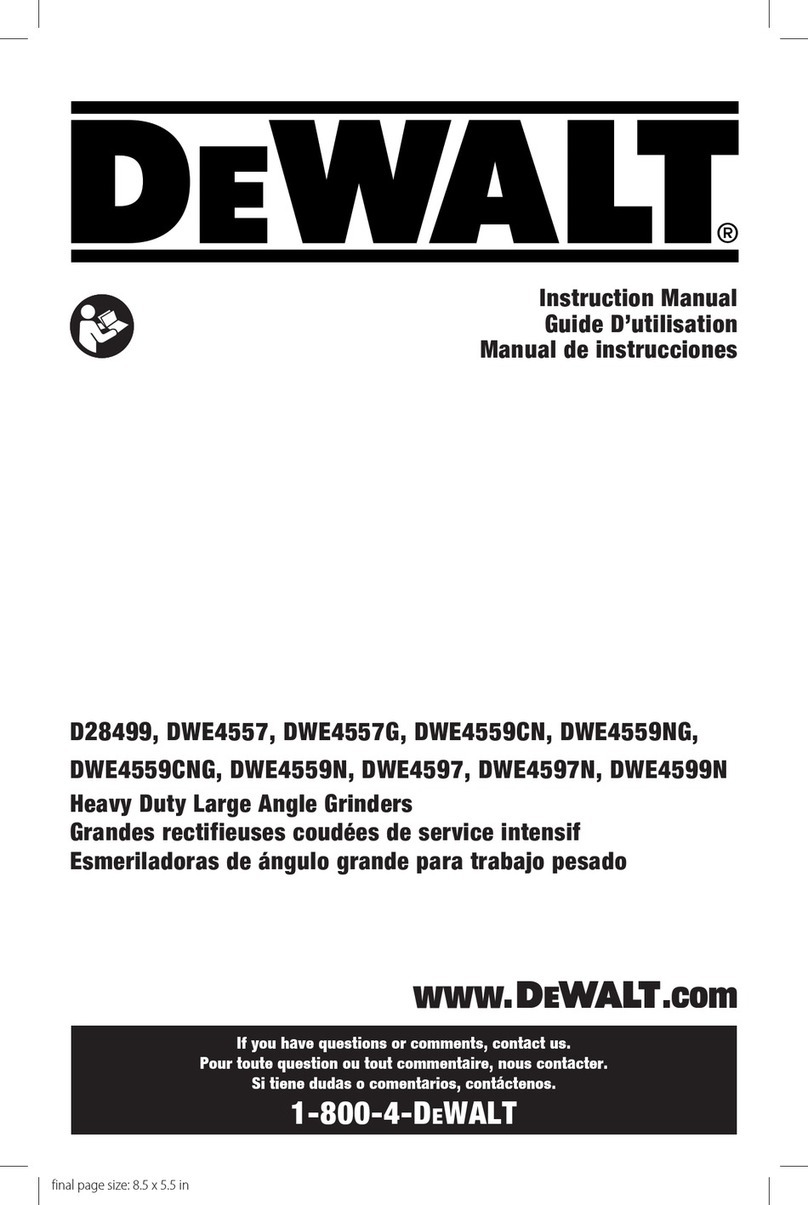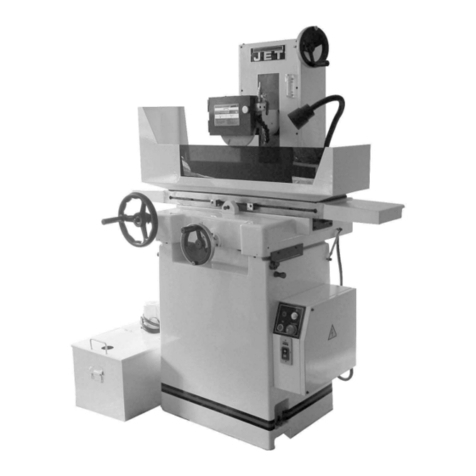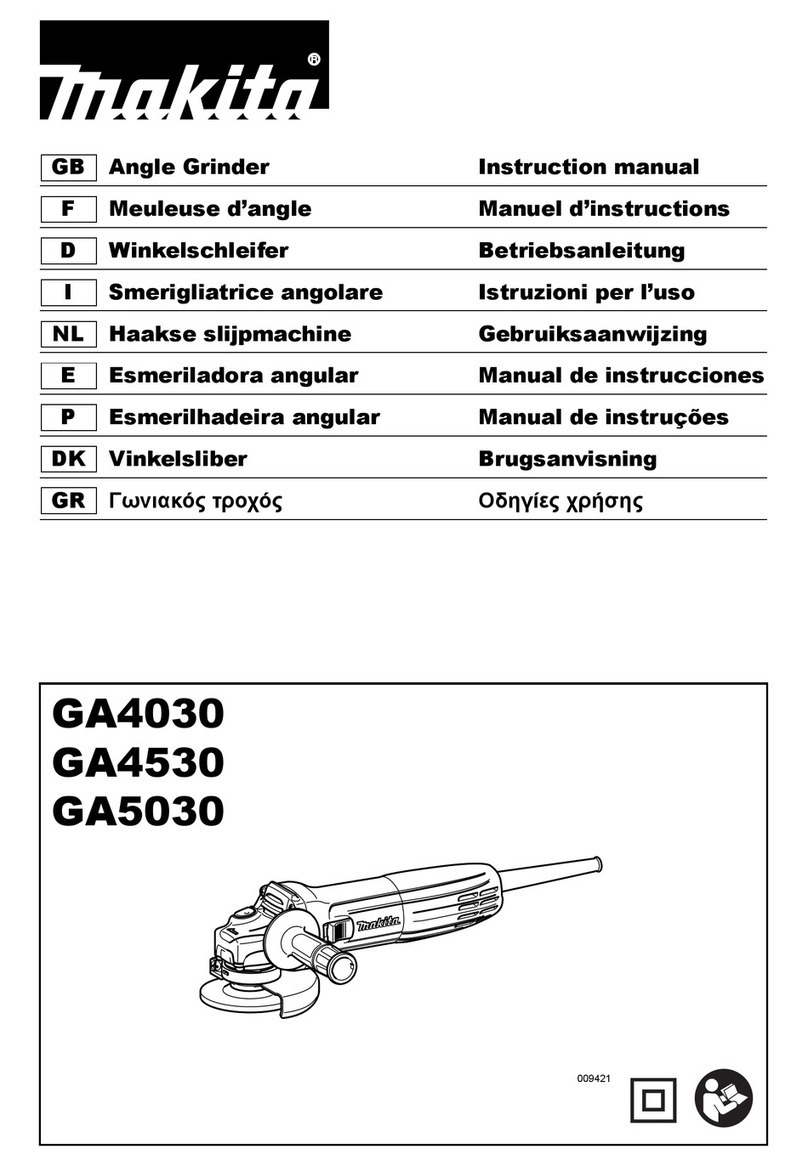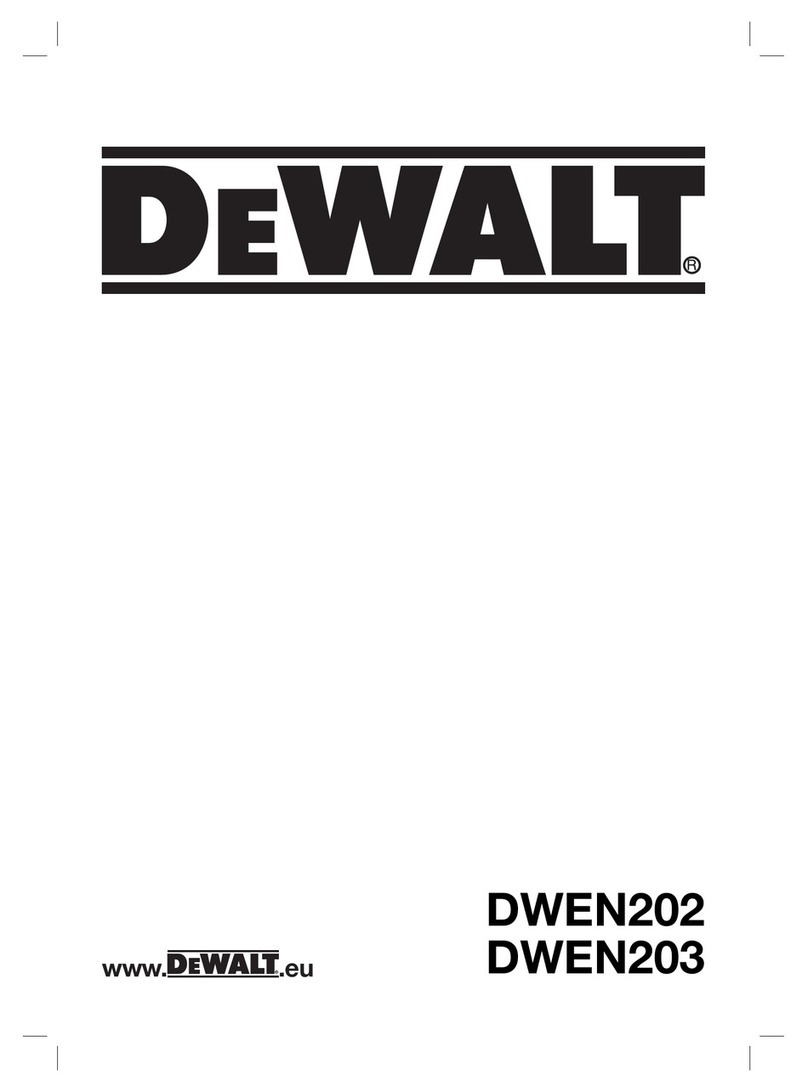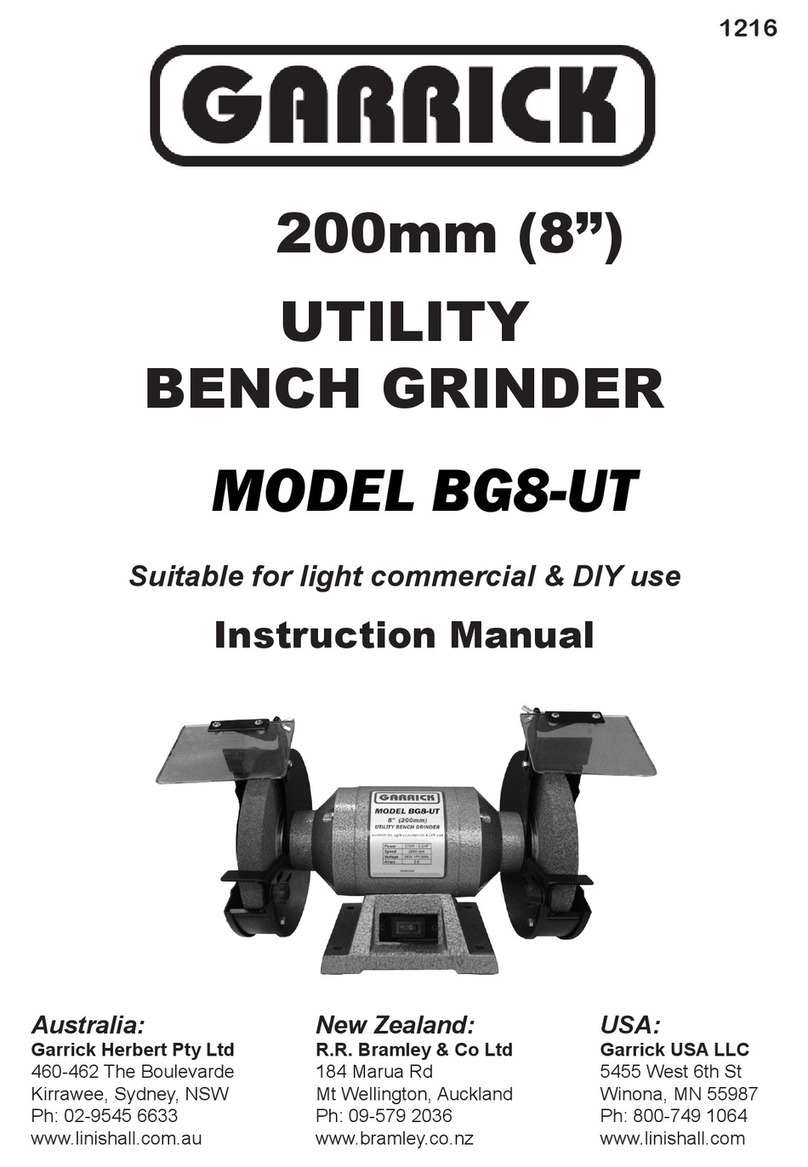
7
KRAUSMANN POWER TOOLS U89020-00B
Do not place the tool in or near re, on stoves
or other high temperature locations.
Do not place the tool in microwave ovens,
high-pressure containers or on induction
cookware.
If you intend to store the tool for a period
without use then store it at room tempera-
ture (19°C to 25°C), charge to about 30-50%
of capacity. When storing for very long
periods boost-charge the battery once a year
to prevent over discharge.
The outside diameter and the thickness of
your accessory must be within the capacity
rating of your power tool. Incorrectly sized
accessories cannot be adequately controlled.
The arbour size of wheels, sanding drum or
any other accessory must properly t the
spindle or collet of the power tool. Acces-
sories that do not match the mounting
hardware of the power tool will run out of
balance, vibrate excessively and may cause
loss of control.
Do not use a damaged accessory.
Regularly clean the power tool’s air vents.
The motor’s fan will draw the dust inside the
housing and excessive accumulation of pow-
dered metal may cause electrical hazards.
Do not use accessories that require liquid
coolants. Using water or other liquid coolants
may result in electrocution or shock.
Use only wheel types that are recommended
for your power tool and only for recommend-
ed applications. For example: do not grind
with the side of a cut-o wheel. Abrasive
cut-o wheels are intended for peripheral
grinding, side forces applied to these wheels
may cause them to shatter.
For threaded abrasive cones and plugs use
only undamaged wheel mandrels with an
unrelieved shoulder ange that are of correct
size and length. Proper mandrels will reduce
the possibility of breakage.
Do not “jam” a cut-o wheel or apply exces-
sive pressure. Do not attempt to make an
excessive depth of cut. Overstressing the
wheel increases the loading and susceptibility
to twisting or snagging of the wheel in the
cut and the possibility of kickback or wheel
breakage.
Do not position your hand in line with and
behind the rotating wheel. When the wheel,
at the point of operation, is moving away
from your hand, the possible kickback may
propel the spinning wheel and the power tool
directly at you.
When wheel is pinched, snagged or when
interrupting a cut for any reason, switch
o the power tool and hold the power
tool motionless until the wheel comes to a
complete stop. Never attempt to remove the
cut-o wheel from the cut while the wheel is
in motion.
Do not restart the cutting operation in the
workpiece. Let the wheel reach full speed
and carefully reenter the cut. The wheel may
bind, walk up or kickback if the power tool is
restarted in the workpiece.
Support panels or any oversized workpiece
to minimize the risk of wheel pinching and
kickback. Large workpieces tend to sag under
their own weight. Supports must be placed
under the workpiece near the line of cut and
near the edge of the workpiece on both sides
of the wheel.
Maintain a rm grip on the power tool and
position your body and arm to allow you
to resist kickback forces. The operator can
control kickback forces, if proper precautions
are taken.
Use special care when working corners,
Kickback and related warnings
Kickback is a sudden reaction to a pinched or
snagged rotating wheel, sanding band, brush or
any other accessory. Pinching or snagging causes
rapid stalling of the rotating accessory which in
turn causes the uncontrolled power tool to be
forced in the direction opposite of the accesso-
ry’s rotation. For example, if an abrasive wheel is
snagged or pinched by the workpiece, the edge
of the wheel that is entering into the pinch point
can dig into the surface of the material causing
the wheel to climb out or kick out. The wheel may
either jump toward or away from the operator,
depending on direction of the wheel’s movement
at the point of pinching. Abrasive wheels may
also break under these conditions. Kickback is the
result of power tool misuse and/or incorrect oper-
ating procedures or conditions and can be avoided
by taking proper precautions as given below.
English | EN

